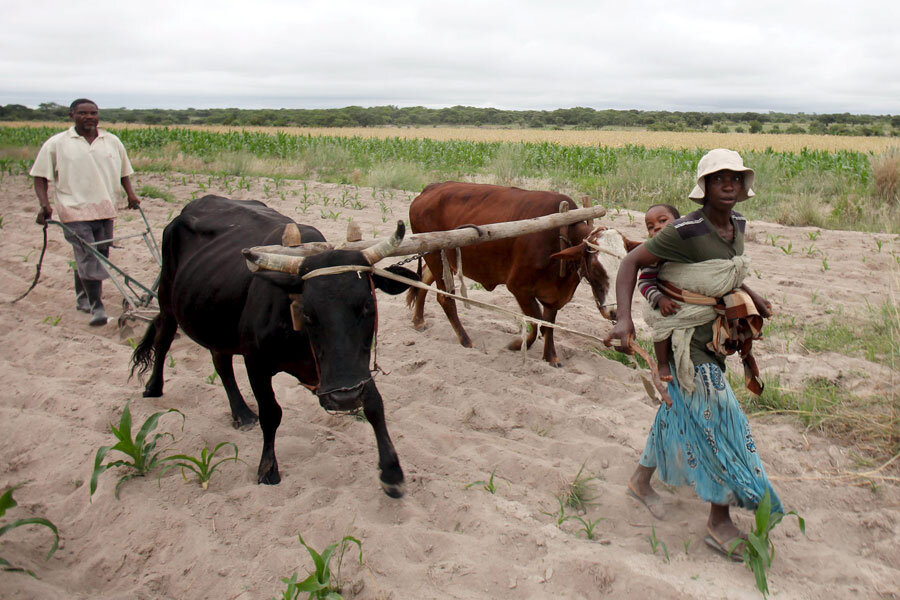Why sub-Saharan Africa needs an agricultural revolution – now
Loading...
Sub-Saharan Africa’s agricultural landscape will experience notable transformation from climate change as early as 2025, reports a new study by researchers with the International Center for Tropical Agriculture (CIAT).
By assessing staple crops that account for half of sub-Saharan Africa’s food supply, the study’s nine authors predict when and where landscapes will experience “transformational adaptation.” In some regions, climate change has impacted the land to the point of no return and the area is no longer suitable for current staple crops.
“This study tells where, and crucially when, interventions need to be made to stop climate change [from] destroying vital food supplies in Africa,” Julian Ramirez-Villegas from the University of Leeds and lead author of the study said in a press release. “We know what needs to be done, and for the first time, we now have deadlines for taking action.”
Governments need to start planning now, urge the authors, because production limitations for these crops will have tangible repercussions for Africa’s small farmers. But if we begin appropriate planning now, farmers across sub-Saharan Africa won’t lose their jobs or their food source.
“Just because people are no longer able to grow one crop, it does not mean that people have no option,” Dr. Ramirez-Villegas tells the BBC. “In most cases, we find that there are alternative crops that remain suitable for those places.”
Of the nine crops studied by the authors, maize, bananas, and beans are “under the most significant threat.” By 2100, 30 percent of all areas growing maize and bananas and 60 percent of all areas growing beans will become unviable and need transformation.
“The study predicts that within the next decade many maize– and banana-growing areas of sub-Saharan Africa will not be suitable for those crops,” Professor Andy Challinor from the University of Leeds and a co-author of the study explained in the release. “The places in which crops are grown will need to alter as climate changes. The key is to plan for those changes.”
And not all transformations happen at once. Even if there is minimal landscape change in the immediate future, we still need to pay attention to the long-term picture, caution the researchers.
“In the case of beans, Uganda and Tanzania both require transformation for about 10 percent of their suitable areas by the 2050s, whereas by the 2090s this increases to more than 30 percent,” the study authors write in a paper published Monday in the journal Nature Climate Change. “Similarly, projected maize transformations represent 5 percent of Nigeria’s current production by the 2050s and 25 percent by 2100.”
Uganda will also need to prepare for transformations in its banana production, which currently accounts for 15 percent of the world’s bananas.
The other six crops (cassava, groundnut, pearl millet, finger millet, sorghum and yam) are still subject to serious climate change implications, but only 15 percent or less of their production areas will become useless by 2100. And where these six crops do continue to grow successfully, yields might decrease Ramirez-Villegas told the BBC.
The researchers recommend ‘shifting crops’ in the soon-to-be transformed landscapes.
If local farmers are growing maize, beans, bananas, or any of sub-Saharan Africa’s other staple crops in these sensitive areas they should consider switching crop types, farming livestock instead, or moving out of agriculture entirely. And local farmers should choose from these options based off of where they are located, say the researchers.
For example, while 40.6 percent of maize-growing areas will experience transformation by the turn of the century, “suitable substitution” crops such as millet or sorghum do exist. But for about 0.5 percent of maize-growing areas, the climate transformation will be so intense that no viable crop substitution exists and local farmers should plan to move out of crop-based agriculture.
And while some of these complete transformations are decades away, we need to act now because some crop-substitution processes can take up to 15 years.
“It can take decades to adjust national agricultural development and food security policies,” co-author Andy Jarvis says in a press release. “Our findings show that time is running out to transform African agriculture.”
[Editor's note: This article has been updated to clarify that this study refers to sub-Saharan Africa.]








